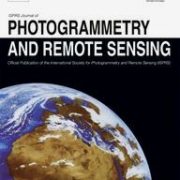Effects of Terrain Morphology, Sampling Density, and Interpolation Methods on Grid DEM Accuracy
Fernando J. Aguilar, Francisco Agüera Vega, Manuel A. Aguilar, Fernando Carvajal Ramírez
2005
Photogrammetric Engineering & Remote Sensing 71: 805–816
ABSTRACT
This paper explores the effects of terrain morphology, sampling density, and interpolation methods for scattered sample data on the accuracy of interpolated heights in grid Digital Elevation Models (DEM). Sampled data were collected with a 2 by 2 meters sampling interval from seven different
morphologies, applying digital photogrammetric methods to large scale aerial stereo imagery (1:5000). The experimental design was outlined using a factorial scheme, and an analysis of variance was carried out. This analysis yielded the following main conclusions: DEM accuracy (RMSE) is affected significantly by the variables studied in this paper according to “morphology > sampling density > interpolation” method. Multiquadric Radial Basis Function (RBF) was rated as the best interpolation method, although Multilog RBF performed similarly for most morphologies. The rest of RBF interpolants tested (Natural Cubic Splines, Inverse Multiquadric, and Thin Plate Splines) showed numerical instability working with low smoothing factors. Inverse Distance Weighted interpolant performed worse than RBF Multiquadric or RBF Multilog. In addition, it is found that the relationship between the RMSE and the sampling density N is adjusted to a decreasing potential function that may be expressed as RMSE/Sdz = 0.1906(N/M)exp(-0.5684) (R2 = 0.8578), being Sdz the standard deviation of the heights of the M check points used for accuracy estimation, and N the number of sampling points used for creating the DEM.
The results obtained in this study allow us to observe the possibility of establishing empirical relationships between the RMSE expected in the interpolation of a Grid DEM and
such variables as terrain ruggedness, sampling density, and the interpolation method, among others that could be added. Therefore, it would be possible to establish a priori the optimum grid size required to generate or storage a DEM of a particular accuracy, with the economy in computing time and file size that this would signify for the digital flow of the mapping information.





